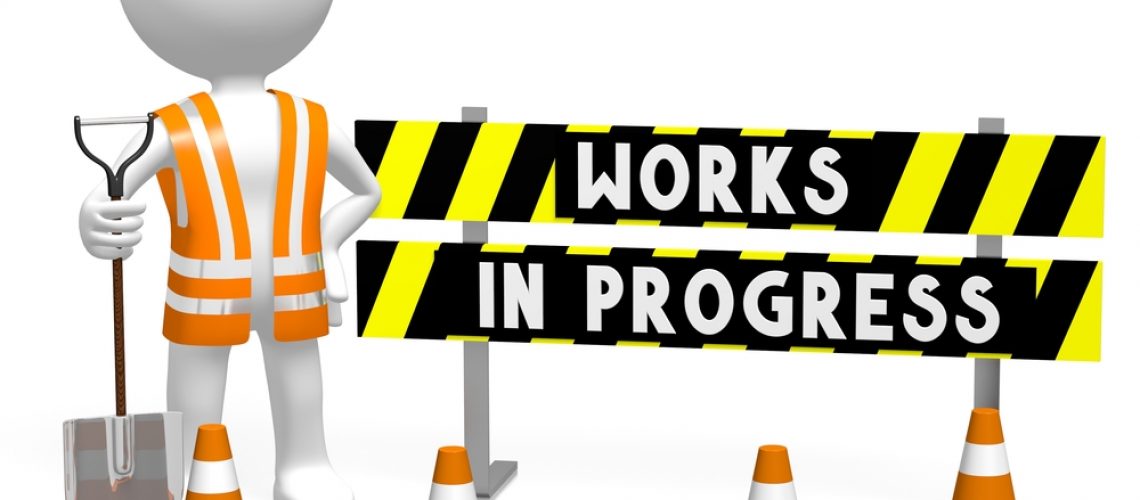A client’s middle school 2e son made an observation as he walked into his therapist’s office the other day. He noted his discomfort at the fact that “anxiety” was part of the center’s name above the door where his therapist works. That his challenge was there in big letters, made him feel exposed and vulnerable. My client’s son suggested that it would be better, less stigmatizing to label the process rather than the challenge. Working on his “stuff” is sometimes messy, he explained, and likened it to a construction site. Wouldn’t it be better if people could just say, “Pardon our mess, we’re under construction?” he queried. It got me thinking about how 2e children are labeled by their struggles rather than their strengths and how this very perspective weakens their ability to persevere. Practitioners, parents and educators alike would do well to address 2e children through a trauma-informed lens.
So often 2e kids’ behaviors are in response to ongoing and continuous distressful experiences. Our children hear tens of multiple redirects and corrections per day. Pay attention, stop that, do that, why don’t you…, why can’t you…? How many times does your child hear his name because he needs to do something or didn’t do something correctly? Parents, how many times before you get out the door do you need to say your child’s name to redirect him? Teachers, take note how many times a 2e student in your classroom is not only redirected or corrected by you, but also by his peers. 2e people are constantly defined by their weakness, struggles and inabilities. Even when they go for help, the places they go are named for their deficiencies. I did a quick google search to compare centers and clinics with diagnoses in their names versus healthy outcomes in their titles. As you can probably guess, there were more Centers for Anxiety then there were Centers for Serenity, more clinics for behavior challenges then for quality of life monikers.
What my client’s son was picking up on was the hyper focus on what we are “fixing” rather than proclaiming the journey and celebrating the process. 2e children’s behavior is assessed based on their actions rather than the underlying reasons for that behavior. Progress is determined against a societal norm rather than comparing someone against himself and his journey. Rather than proclaiming labels for the world to see and judge, my client’s son wanted a positive spin; he wanted the world to know great things are coming, but he has to get through some of the grunt work first.
I just love his construction-site analogy, it smacks of resiliency. Construction sites hold promise and excitement. I remember walking by building sites with my kids when they were little. Oh, the squeals of delight when we could peek through a window to see the progress. Humans love to build things and watching the transformation is fascinating. Conversely, humans are also drawn to destruction likes moths to a flame. There are countless YouTube videos recording detonating and exploding buildings. More air time is given to heart wrenching news broadcasts than heart-warming stories. Why is the human condition forever played out in a glass half empty manner? Parents’ and teachers’ responses to a child’s or student’s behavior directly affects the strength of that child’s foundation upon which their resilience is built. And, as we all know, the stronger the foundation, the stronger the structure.
Twice exceptional kids’ foundations are forever at risk of crumbling. Think about it. 2e kids are judged, rejected and corrected all day long. If this constant negative messaging doesn’t create trauma for our kids, I don’t know what does. Clients share stories of experiences that chip away at their children’s “foundations.” One client couple shared how their brilliant kindergartner spent more time in the principal’s office than on the playground because she sings and interrupts when she’s nervous or bored. The teacher constantly called her out for this “disruption” and she routinely missed recess and class celebrations. One Mom relayed that her high school son was chastised and pathologized after honestly answering a test question about the effectiveness of the class. A middle schooler’s teacher described him as unwilling to learn, when what we knew was that his anxiety in her classroom kept him from being available to learn. 2e students are often negatively judged on their inability to present written information. Simultaneously the ability to show the depth of what they know in an alternative way is discounted. Bit by bit these experiences cause these children’s foundations to crumble – weakening their resilience through chastisement, reprimands and causing the worst harm: self-doubt.
What if the opposite were true? For the singing kindergarten girl, what if the teacher recognized that singing indicated anxiety and said, “That’s a nice tune, I wonder what you are thinking about?” and took the time to listen and soothe. When the same little girl interrupted or shouted out answers, what if it was understood that she was bored and was given something meaningful to do? For the high school boy, what if the school recognized his bravery for making himself vulnerable when he responded honestly to what he felt about the class? I wish the middle school boy was given empathy and time, some personal attention, some recognition that his feelings matter. So much stigma is assigned when we focus on deficits or behavior or struggles and fail to recognize the process these kids go through.
Shifting perspective to include a trauma informed lens allows for a mindset that embraces and celebrates step-by-step construction and gives 2e children the opportunity to lay strong groundwork in order to progress. If adults look at 2e children and see the hints of great things to come, it could be like those building sites with big billboard signs proclaiming, “Coming Soon!” accompanied by an illustration of the shiny new building to come.

Author: Julie F. Skolnick M.A., J.D.
Julie Skolnick, M.A., J.D., is the Founder of With Understanding Comes Calm, LLC, through which she passionately guides parents of gifted and distractible children, mentors 2e adults, and collaborates with and advises educators and professionals on bringing out the best and raising self-confidence in their students and clients.



7 Responses
I couldn’t love this blog post more. Beautiful. THANK YOU for seeing, hearing, and putting into words the truths our kids LIVE.
Thank you for sharing your response, Kristi, I am so pleased it resonated with you!
Only recently had I heard the term”2E” when a Educator said my 13 year old son seemed to be in this category. I was given these posts and not only do they ring true but they are eye opening. I have always known my son is unique and have in recent years adjusted my parenting as traditional tactics do not work. I have a lot more to learn but this is a great start.
Colleen, I’m thrilled that the blogs are thought provoking and relational for you. So glad! Check out videos, articles and podcasts on our media and Let’s Talk 2e tabs. I’ve had the chance to talk to lots of great people!
Hi Julie, while reading your blog it reminded me of a time when my son was in 4th grade. His IQ tested in the upper 100’s, but he had also been diagnosed the previous year with ADHD. His teacher, who was certified Special Ed/Elementary Ed, did not seem to be equipped to teach an intelligent, yet fidgety child. Instead of recognizing his strengths or reaching him by offering him specific goals to work toward or praising him for his effort in following directions and successfully completing assignments she would criticize him for being fidgety and would go as far as to punish him by holding him back from recess. For him to keep focused he would take his heel in and out of his shoe. For whatever reason, this act bothered her, although no one else seemed to notice. I sure wish I had your blog back then so I could share it with her. Maybe then she would have tried to understand my son and provide him with effort based praise to motivate him and give him confidence instead of focusing on what she considered a negative that had nothing to do with his learning abilities. Because of the way she reacted to him it made him feel bad about himself and during that year he did not want to go to school. Thank you for writing your informative blogs. I know they are helping many families.
Thank you Amy for sharing your story. The frustrations parents feel as they watch the self esteem drain from their beautiful children is heart-wrenching. I am hopeful that parents and teachers alike find understanding and strategies that help them celebrate the strengths while shoring up the struggles of the 2e children and students.
Great post, Julie. This perspective is part of the reason my web presence is called Gifted and Growing.